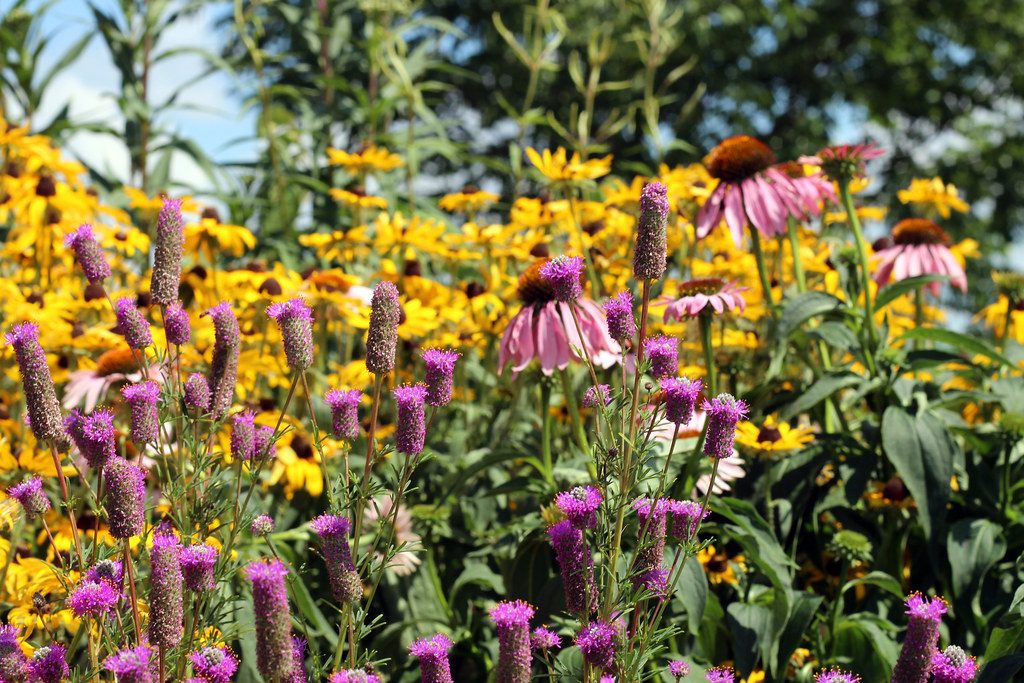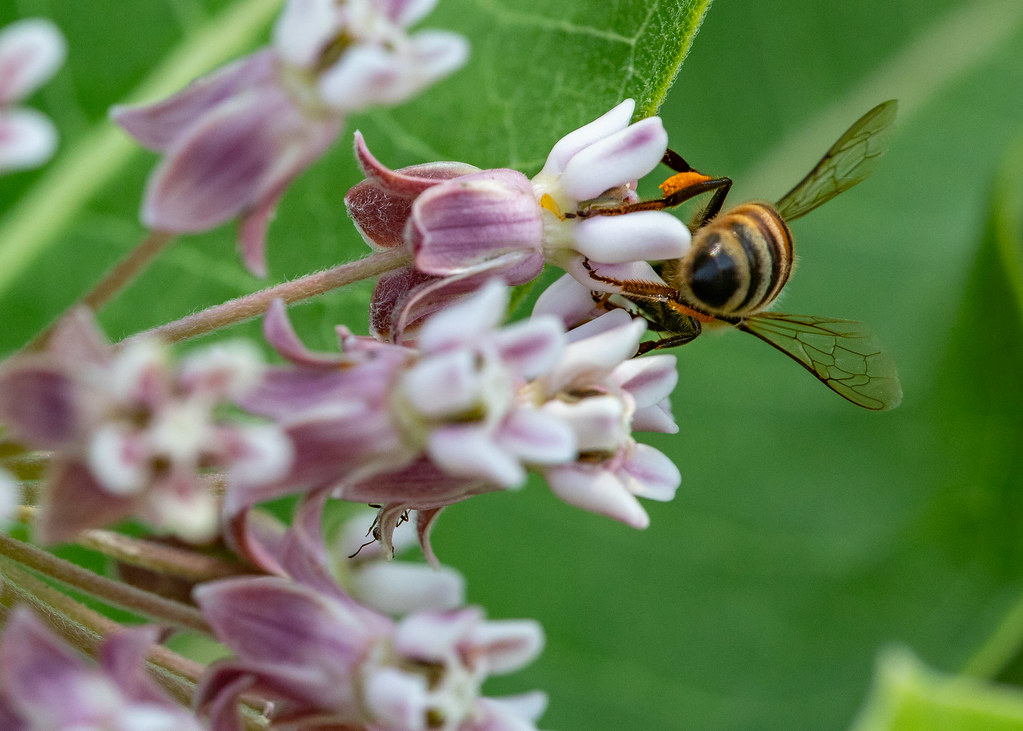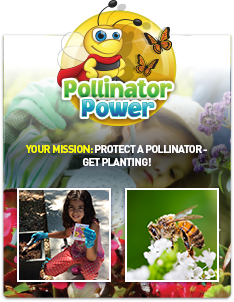Pollen, pollen, pollen! It’s that time of year, Earth Rangers, when the pollinators are out in full force! As you probably already know, pollinators are so important for our ecosystems and for the food we grow. In order to help out our pollinator pals, we can provide them with their favourite snacks (flowers!), to make sure they have enough nectar to munch on! So, let’s get down to ‘buzz-ness’ and go through the steps to building a fantastic pollinator garden.
The first step to build a pollinator garden is to choose a handful of different native plants. Remember, the more diverse, the better! When it comes to attracting more than one kind of pollinator, you will want to have a good variety of different flowering plants. Native plants are adapted to their environment and can accommodate their local pollinator’s needs more than non-native plants can. There are many planting guides online, such as the guide Pollinator Partnership has created, for different regions around Canada. This guide can also be found on the Earth Rangers app under the Pollinator Power Mission. We suggest checking that out to make sure you choose the correct flowers for your area!

Next, pick a good spot. Depending on which kinds of plants you are growing, they may need full sun or some shade, so pick your spot accordingly. If you don’t have a ton of space, not to worry! Pollinator gardens can be any shape or size – even planting flowers in pots, planters or window boxes will help out your local pollinator population. No matter where your flowers are, the pollinators will find them! Pollinators can track down sweet blooms based on their colours and scents. In particular, pollinators tend to like brightly coloured flowers, such as blue, yellow, red and purple! A few examples of flowers that truly catch a pollinators eye include: bee balm, coneflowers, black-eyed susans, purple verbena, native asters and goldenrod. Another tip to growing the perfect pollinator garden is to plant flowers that bloom in a succession over different seasons (spring, summer, fall). This way, your local pollinators will be supplied with nectar and pollen all season long, and you have plenty of options for those pollinators with different schedules, preferences and habits!

Here are some more quick tips on making a garden positively teeming with pollinators:
- Make sure to source plants that are pesticide and herbicide free – chemicals such as these are toxic to pollinators.
- Add in small piles of branches – this will attract some species of butterflies and moths.
- Supply hollow or rotten logs for beetles to nestle into.
- Don’t remove fallen plant debris – leave it for nesting bees.
- Leave dead or dying trees for woodpeckers.
- Avoid using weed cloth or heavy mulch – many species of bees nest in the ground.
- Plant larger patches of each species to help pollinators forage more efficiently.
- Be patient – it takes time for plants to grow and for a garden to truly develop.
If you are interested in helping out your local pollinator population, get planting – the pollinators will thank you! In return for all of the hard work pollinators do for us, building a pollinator garden is one thing we can do for them. Keep it up, Earth Rangers!
Check out the Pollinator Power Mission in the Earth Rangers app to find out more about pollinators, pollinator gardens and more! After all, ‘tis the season to do some gardening.




Bees like honey and pollinate our food so we can eat nice and healthy
I like the huny the bees make.
Wow I didn’t know that there was so many pollinator’s!!!